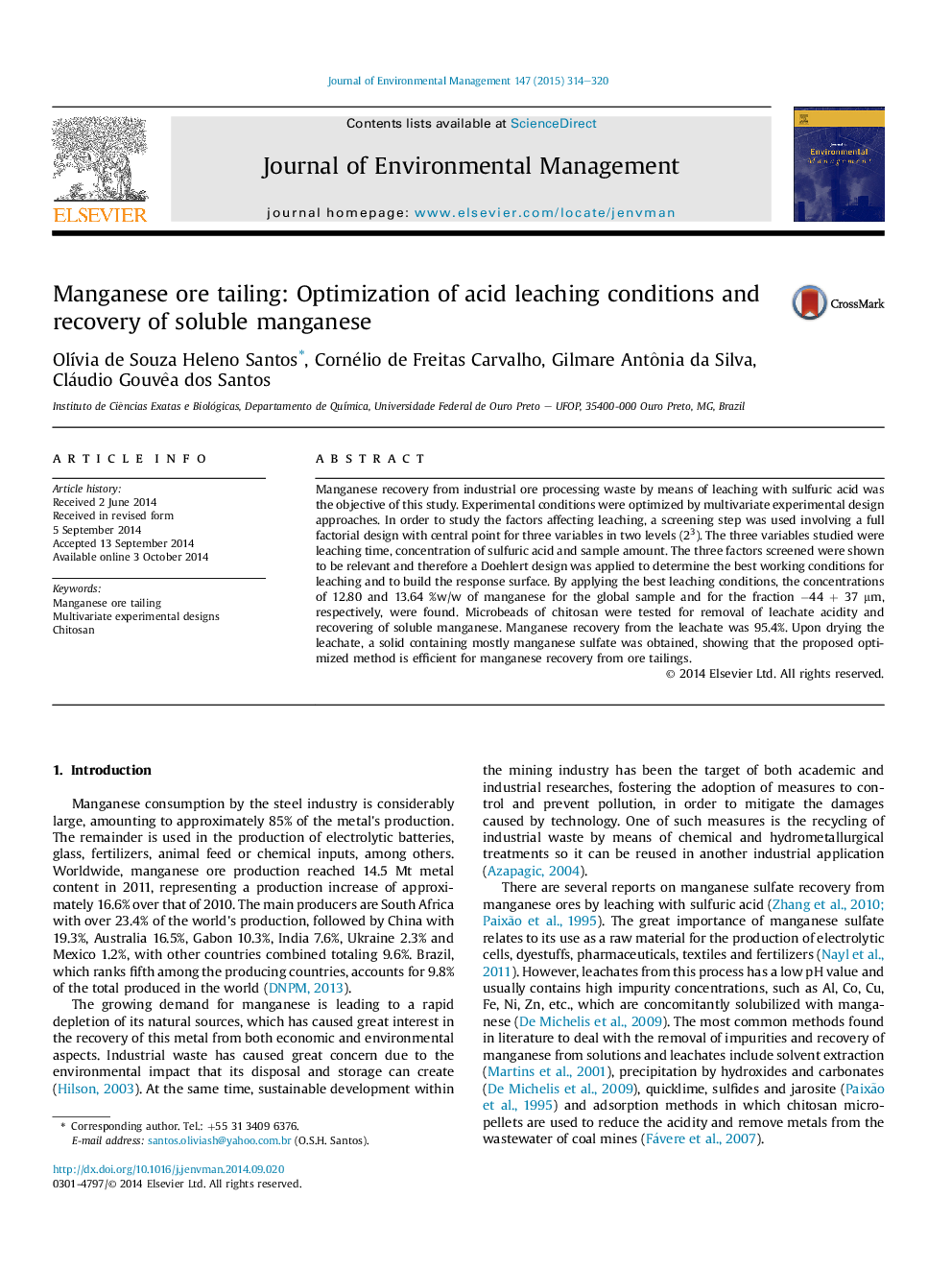| Article ID | Journal | Published Year | Pages | File Type |
|---|---|---|---|---|
| 1055674 | Journal of Environmental Management | 2015 | 7 Pages |
•Manganese recovery by leaching waste with sulfuric acid is described.•Multivariate experimental designs were used to optimize operational conditions.•Working conditions were optimized using a Doehlert design approach.•Chitosan microbeads proved to be efficient for removing acidity from the leachate.
Manganese recovery from industrial ore processing waste by means of leaching with sulfuric acid was the objective of this study. Experimental conditions were optimized by multivariate experimental design approaches. In order to study the factors affecting leaching, a screening step was used involving a full factorial design with central point for three variables in two levels (23). The three variables studied were leaching time, concentration of sulfuric acid and sample amount. The three factors screened were shown to be relevant and therefore a Doehlert design was applied to determine the best working conditions for leaching and to build the response surface. By applying the best leaching conditions, the concentrations of 12.80 and 13.64 %w/w of manganese for the global sample and for the fraction −44 + 37 μm, respectively, were found. Microbeads of chitosan were tested for removal of leachate acidity and recovering of soluble manganese. Manganese recovery from the leachate was 95.4%. Upon drying the leachate, a solid containing mostly manganese sulfate was obtained, showing that the proposed optimized method is efficient for manganese recovery from ore tailings.
